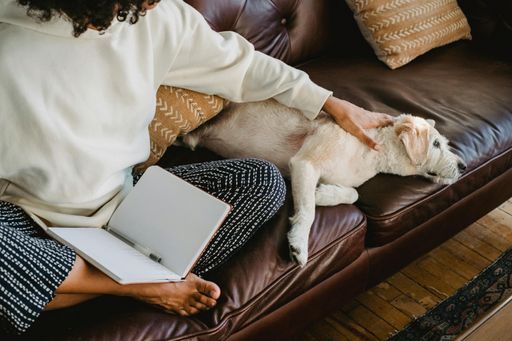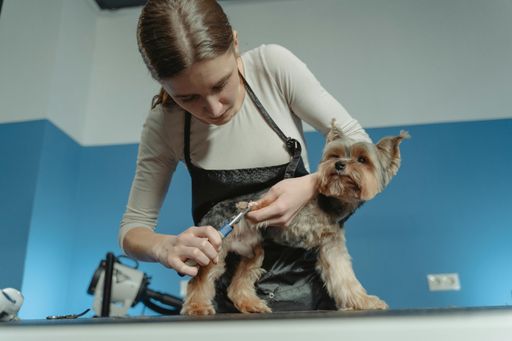Getting a new pet is an incredible feeling. Whether you’re a single adult or part of a family household, there’s an excitement that comes from introducing an animal into your home. Yet there’s also a significant amount of stress that many adoptive organizations won’t tell you about.
The stress many soon-to-be pet parents will feel is the worry of whether they’ve properly prepared for their pet’s arrival. While preparing for a new pet takes a lot of consideration, it isn’t anything overwhelming. Whether it’s pet-proofing your home or getting a custom dog tag made for an adventurous puppy, there are simple things you can do to prepare for your pet’s arrival.
Gather Necessary Supplies and Tools
The first thing you’ll need to do is ensure you have the right tools to welcome a pet into your home. Here are some of the essentials you’ll need for each common pet:
- Correctly-sized crate with comfortable bedding
- Food and water bowls
- An adjustable collar (We recommend the Rock Solid Collar ID)
- An adjustable and set-length leash
- Toys
- Grooming equipment
- Baby gates to teach them specific rooms are off limits
- Bed
- Pet identification tag
Pet-Proof Your Home and Set Ground Rules
Inviting a puppy or kitten into your home is like letting a new toddler run wild. If there is anything that can be batted around, torn apart or stuffed into their mouth, expect it to be so.
You’ll want to pet-proof your home for this reason, preparing it by removing dangers, hazards and all items you wish to not have damaged and ruined. This can include hiding precious items and heirlooms that are normally out in the open and removing dangers such as electrical cords, yarn, potentially dangerous houseplants and more. Consider throwing a blanket over furniture if you’re worried about it being clawed up when your pet moves in.
This is also the time where you’ll want to put baby gates into practice, especially with a dog who likes to wander. This will block them off from rooms where they shouldn’t be without supervision, whether that be the bathroom or your bedroom.
Consider Your Yard
You should block off access from certain parts of your yard just as you did your home. Fences are the easiest way to achieve this, especially when it comes to potentially dangerous areas like a garden, landscaping, fountains, ornaments and more. Still, look over your yard even if you have an existing fence. You might find a weak spot that needs to be repaired or a dangerous item that needs to be removed.
Once your pet has arrived, introduce them to the yard and allow them to explore. Keep your eye on them while they do it, though, as you’ll want to call out to them with an explicit “No” if they start doing anything they’re not supposed to.
Create a Routine Ahead of Time
Inviting a new animal into your home is all about transitioning. They’ll be learning your rules and behaviors just as you’ll be watching theirs. Puppies and kittens will require a lot of attention throughout the day, most of which will be spent playing and should be spent training. Puppies will need more engagement outdoors, though, requiring regular bathroom breaks, walks, playtime and more.
Try to create regularity for them, from when you feed them in the morning and evening to when you take them outside to use the bathroom. This regularity will become quickly learned, which will make the process of teaching easier. But the system won’t be perfect from the beginning. So, do your best to stick to a routine, such as: waking up, getting your dog’s collar with attached pet ID tags on, heading outside for a walk and for them to use the bathroom and then returning home and providing them with breakfast.
Schedule an Appointment with Your Vet
While your pet is likely healthy upon arrival, it’s a good idea to have your local vet take a look at them. This brief introduction is important, as your vet can give your pet a total physical, looking for potential medical conditions and concerns or making note of behavioral issues that should be addressed.
Introduce Your New Pet to Your Home
Welcoming an animal into your home is an incredible thing, but it requires a gradual introduction—mostly for the animal’s sake. Dogs do best when meeting family beforehand, outside of the home, providing them with ample space to wander and introduce themselves to different family members without being forced into a room with them.
The same goes for cats, who can be more anxious upon first meeting family members. Consider leaving them in a separate room where they can become acquainted with your home, where people occasionally visit and introduce themselves.
While it might be tempting to host a welcome home party for your pet, it’s not the best idea. Being introduced to too many strangers at once—all of whom want to pick them up and cuddle with them—is too much for a pet. Rather, gradually introduce various friends and non-nuclear family members once your pet has become comfortable with those living in your household.
Train with Patience
You’ll have your hands full if you’re welcoming an untrained dog into your home. But don’t let it get the best of you. Remember that your animal is only doing what they instinctively know.
Approach their habits and your training with the utmost patience, remembering that they want you to be as happy as you do them.



















